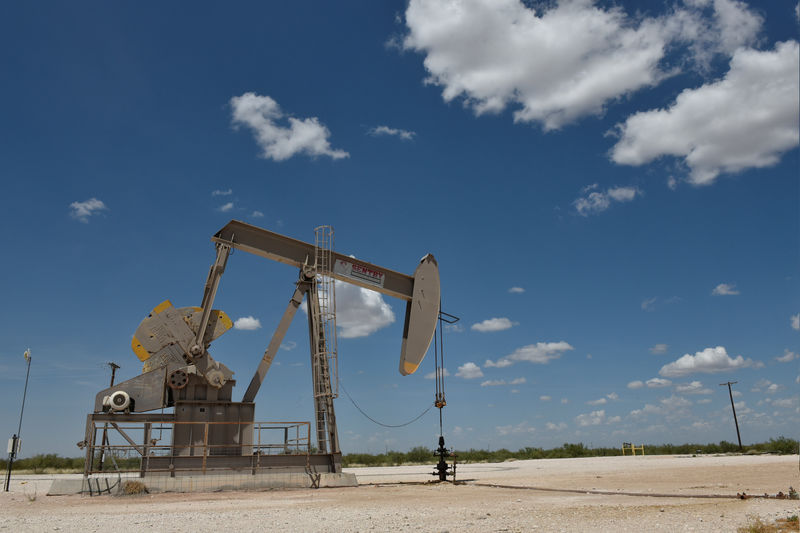By Ayenat Mersie
NEW YORK (Reuters) - Oil prices rose about 1 percent on Wednesday, supported by a drawdown in U.S. crude and gasoline stockpiles and on news of falling Iranian crude shipments as U.S. sanctions deter buyers.
Brent crude oil (LCOc1) was up 57 cents at $76.52 a barrel by 11:38 a.m. EDT (1538 GMT). U.S. crude (CLc1) was 77 cents higher at $69.30 a barrel.
U.S. crude inventories
U.S. crude futures bounced briefly to $69.55, their highest in three weeks, on the inventory data before retreating.
U.S. gasoline stocks
Increased gasoline demand was particularly supportive to the market given that crack spreads had been weak, said Bob Yawger, director of energy futures at Mizuho.
Oil prices were also buoyed by renewed focus on Iran, as exports there "are falling faster than previously expected," Jim Ritterbusch, president of Ritterbusch and Associates, said in a note.
Iran's crude oil and condensate exports in August are set to drop below 70 million barrels for the first time since April 2017, preliminary trade flows data on Thomson Reuters Eikon show.
Many crude buyers have already reduced orders from Iran, OPEC's third-biggest producer, ahead of the Nov. 4 start date for U.S. sanctions.
Although Tehran is offering steep discounts, Iran's August loadings are estimated at 2.06 million barrels per day (bpd) versus a peak of 3.09 million bpd in April. [nL3N1VF3SD
The reduction in Iranian exports "imply some global supply tightening unless OPEC and Russia boost output from already elevated levels," Ritterbusch said.
Average Iranian crude exports by month - https://reut.rs/2LClnmH
In Venezuela, where production has halved since 2016, the state-run oil firm PDVSA said on Tuesday it had signed a $430 million investment agreement to increase production by 640,000 bpd, although some analysts doubted whether this investment would go through given ongoing instability.
GRAPHIC: Venezuela crude oil exports - https://tmsnrt.rs/2LvCPtl
Meanwhile, the preliminary export plan for fellow OPEC member Angola indicates that its shipments have dropped to the lowest level since December 2006, as a lack of investment in ageing infrastructure continues to limit production.
Despite the risk of disruption from these OPEC producers, Bank of America (NYSE:BAC) Merrill Lynch said global supply could climb towards the end of the year, in part due to increased non-OPEC output from Canada, the U.S. and Brazil.

Norway's Equinor (OL:EQNR) said it plans to develop new oil fields in Brazil and raise output from 90,000 barrels of oil equivalent per day to between 300,000 and 500,000 boepd by 2030.